Jackson County Inmate Roster – 9-3-20
| Inmates booked into the Jail within the last 24 hours. | |||||||||||||||
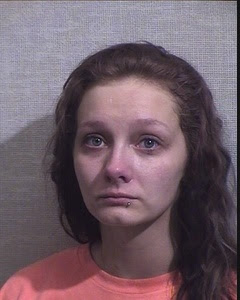 |
|
||||||||||||||
|
|
|||||||||||||||
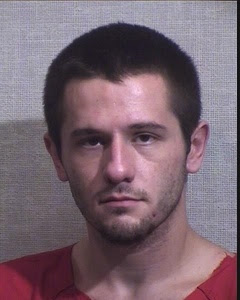 |
|
||||||||||||||
|
|
|||||||||||||||
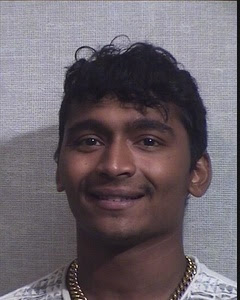 |
|
||||||||||||||
|
|
|||||||||||||||
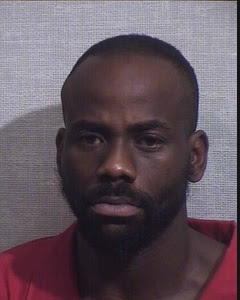 |
|
||||||||||||||
|
|
|||||||||||||||
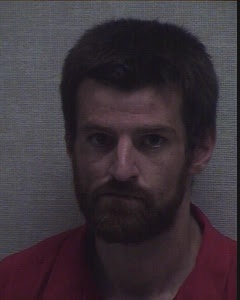 |
|
||||||||||||||
|
|
|||||||||||||||
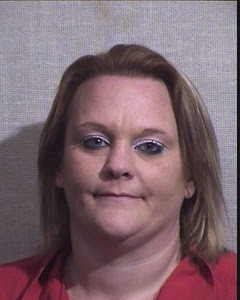 |
|
||||||||||||||
|
|
|||||||||||||||
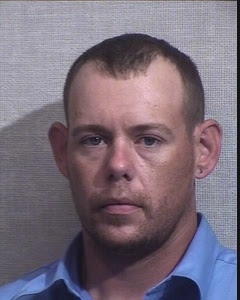 |
|
||||||||||||||
|
|
|||||||||||||||
| Inmates released from the Jail within the last 24 hours. | |||||||||||||||
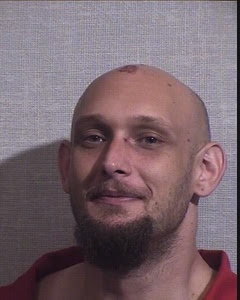 |
|
||||||||||||||
|
|
|||||||||||||||
 |
|
||||||||||||||
|
|
|||||||||||||||
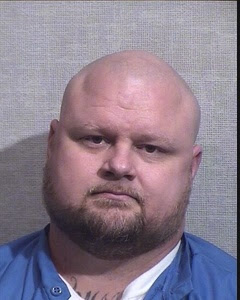 |
|
||||||||||||||
|
|
|||||||||||||||
 |
|
||||||||||||||
| Inmates booked into the Jail within the last 24 hours. | |||||||||||||||
 |
|
||||||||||||||
|
|
|||||||||||||||
 |
|
||||||||||||||
|
|
|||||||||||||||
 |
|
||||||||||||||
|
|
|||||||||||||||
 |
|
||||||||||||||
|
|
|||||||||||||||
 |
|
||||||||||||||
|
|
|||||||||||||||
 |
|
||||||||||||||
|
|
|||||||||||||||
 |
|
||||||||||||||
|
|
|||||||||||||||
| Inmates released from the Jail within the last 24 hours. | |||||||||||||||
 |
|
||||||||||||||
|
|
|||||||||||||||
 |
|
||||||||||||||
|
|
|||||||||||||||
 |
|
||||||||||||||
|
|
|||||||||||||||
 |
|
||||||||||||||









Timothy Scott Lewis, 33, Salem

Todd Michael Lester, 36, Salem

Daniel A. Howard, 38, Fredericksburg

Jennifer Lynne Hamilton, 39, Salem

David Scott Barker, 34, Pekin

Ashley Renee Bunch, 35, Pekin

Bryan Austin Jackson, 24, Salem

Douglas R. Smith, 59, Hardinsburg

Christopher Lee Banet, 49, Pekin

Annie Renee Napier, 35, Salem

Gail Ruth Napier, 66, Salem

Annie Napier, 35, Salem appeared in the custody of the Washington County Sheriff’s Department this morning in Washington Circuit Court before Judge Larry Medlock and entered a not-guilty plea.
Napier, and her mother, Gail, were arrested early Tuesday morning on a variety of charges including possession of Marijuana, Maintaining a Common Nuisance, and Possession of a Legend Drug. (see the related story – https://wslmradio.com/2020/09/02/daughter-tips-police-to-marijuana-in-parents-house-search-finds-pot-and-pills/ )
Napier actually tipped police to the presence of drugs in her parent’s house, but the police report doesn’t detail whether or not she was in possession of anything.
According to Prosecuting Attorney Justin Houchin, she was released from incarceration on her own recognizance this morning after her initial hearing in court.
According to court records, Napier advised that she plans on hiring an attorney.
Pursuant to Criminal Rule 26, the Court released the defendant who is supposed to pay her bond by 4:00 pm tomorrow (Friday).
Medlock set a pretrial conference for 09/24/2020 at 9:00 AM and a bench trial for January January 12, 2021 at 8:30a.
Gail Napier posted bond and was released from jail Wednesday morning. No hearing date has yet been set for her.
Police recommended to Houchin that Gail’s husband, Michael, also be arrested, however, no charges have yet been filed on him.
“In making the arrest, the police officers cite that the place was [Annie’s] residence, and she knew about the drug use in the home, which can constitute constructive possession,” said Houchin.
Houchin further explained that Annie Napier physically retrieved and handled the marijuana.
“The officers also had a difficult time at the scene because the Napiers were fighting with each other, and, as the report indicates, detention was necessary to allow the investigation and search warrant execution to proceed without interference,” said Houchin.
Annie Napier was charged with
“My role is to evaluate whether probable cause for the arrest exists,” said Houchin. “I believe there was probable cause for the arrest, and the Judge [Frank Newkirk Jr.] independently found probable cause. Of course, all suspects are presumed innocent until proven guilty. This case will proceed as all other cases do in the Washington County Court system.”
Do you have questions about cleaning up your garden for the winter to better prepare it
for planting next spring?
If so, you should plan to join the Fall Garden Cleanup Webinar presented by Jeff Hermesch, Purdue Extension Ag and Natural Resources Educator in Decatur
County on Wednesday, September 23, 2020 beginning at 11:30 am to discuss garden chores, tools, and equipment, cover crops, and soil testing.
Jeff will also be available to answer your fall garden questions.
To join the webinar and/or to receive the webinar recording, pre-registration is
required by Monday, September 21, 2020, by visiting http://bit.ly/2020fallgardencleanup.
For questions about the webinar, contact Purdue Extension – Decatur Co. at jhermesch@purdue.edu or 812-663-8388, Purdue Extension – Jackson Co. at rbeckort@purdue.edu or 812-358-6101, Purdue Extension – Lawrence Co. at odavis@purdue.edu or 812-275-4623, or Purdue Extension – Washington County at dhowellw@purdue.edu or 812-883-4601.
“Hoosiers” Screening Scheduled at Tibbs Drive-In on Thursday Night, September 17
The Indiana Broadcaster Association, which represents more than 270-member radio and TV stations (including WSLM and WRLW TV) across the state, is hosting a special screening of the movie “Hoosiers” at Tibbs Drive-In – ideal family-friendly and socially-distant entertainment — on Thursday, September 17.
Attendees are welcome to bring lawn chairs and sit outside of their vehicle, but everyone must comply with social distancing guidelines put in place by Tibbs Drive-In.
All the proceeds from the special event will be donated to support the historic Hoosier Gym in Knightstown which has been deeply impacted by COVID-19. The Knightstown locale served as the home gym for the “Hickory Huskers” in the 1986 movie.
“Like every cultural and sports facility in our state, Knightstown’s Hoosier Gym has been financially hurt by the Covid-19 pandemic. Visitors counts are down. Tournament games that normally generate significant revenue have been canceled. So, Indiana’s broadcasters are linking arms to help the iconic state landmark that has been the site of decades of memories for Hoosiers and people all over the world,” said IBA Executive Director Dave Arland.
Tickets to the Tibbs Drive-In event are $11 per person are available now for advance purchase through HelpHoosierGym.com. Gates open at 7:30pm. The screening will begin with sundown at 8:30pm.
Attendees will have the chance to win several door prizes including:
If you purchase the book Eleven Life Lessons at the screening, you will get a Hoosiers mini-movie poster and autographs from author Bob Garner and Hickory Husker Brad Long.
Road work moratorium for the holiday weekend beginning Friday afternoon
The Indiana Department of Transportation announces a road work moratorium for the Labor Day weekend beginning Friday afternoon, Aug. 30, through the morning hours of Tuesday, Sept. 2.
As Labor Day holiday weekend is typically one of the busiest times for travel on Indiana’s highways, wherever possible, road restrictions will be removed to ease traffic flow for holiday drivers.
Some closures and restrictions will remain on larger projects that cannot safely reopen to traffic. Here’s where you will see restrictions remaining over the holiday weekend:
Central Indiana
Southern Indiana
Northern Indiana
Drive Safely
INDOT reminds Hoosiers to travel safely and plan for more driving time during the busy weekend.
Indiana State Police arrested a Terre Haute man after a months-long investigation.
Derek Cerny, age 43, of Terre Haute, Indiana, has been charged with theft and possession of a controlled substance. Cerny was issued a summons to appear in Parke County Circuit Court.
ISP initiated a criminal investigation on April 4, 2020, after receiving information from the Parke County Sheriff’s Department that a Terre Haute man had committed theft of a schedule II controlled substance (hydrocodone).
The investigation, conducted by Sergeant Samuel Stearley of the Putnamville Post, revealed that a male subject had allegedly stolen five painkiller tablets from a Rockville resident who was recovering from back surgery.
At the conclusion of the investigation, the case was presented to the Parke County Prosecutor’s Office for review.
The Parke County Prosecutor’s Office made the determination, after reviewing the investigation, that charges would be filed in this case.
Under the Law, criminal charges are merely accusations and the defendant is presumed innocent unless and until proven guilty in a court of law.
Two people were arrested for charges relating to the possession and dealing of methamphetamine Wednesday evening following an investigation by officers with the Drug Enforcement Section (DES) assigned to the Indiana State Police Sellersburg Post.
Arrested and charged were:
Todd Sieg, 41, Hardinsburg, IN:
Sarah Wethington, 42, Paoli, IN:
On Wednesday, Troopers with DES received information about possible drug activity at a Hardinsburg address just inside Orange County.
Investigators also learned that their person of interest, Sieg, was wanted on a Clark County warrant.
When officers arrived, they located Sieg and Wethington.
Officers discovered Wethington was wanted on a warrant in Orange County.
After locating Sieg, officers continued their investigation, which included a search of the residence.
During the search, officers discovered more than 5 ounces of suspected methamphetamine, three handguns, just under $3000 in cash, and numerous drug paraphernalia items.
Officers also located a stolen wallet related to Sieg’s theft warrant out of Clark County.
Officers from the Drug Enforcement Section were assisted by officers from the Sellersburg Post All-Crimes Policing Squad and the Washington County Sheriff’s Department Drug Team.
Both Seig and Wethington were transported to the Orange County Jail without incident.
Six south-central Indiana airports – including Salem’s – received part of the U.S. Department of Transportation’s $1.2 billion investment in airport safety and infrastructure grants through the Federal Aviation Administration.
Salem Municipal Airport will receive $286,111.
Rep. Trey Hollingsworth (IN-09), who represents parts of southern and central Indiana, supported the CARES Act in the House of Representatives and has been a longtime advocate for local airports as ways to attract and bring in more jobs and economic investment.
“Our smaller communities in Indiana have done an incredible job helping Hoosiers get back on their feet after the COVID-19 economic shutdown. Now, as we focus on building back up our economy, strengthening our local infrastructure is a key component of delivering jobs and economic development to southern and central Indiana”, said Rep. Trey Hollingsworth.
The grants will be used for a variety of projects, including extending and repairing runways and taxiways, installing aircraft lighting and signage, improving airport fuel farms, and expanding existing general aviation aprons.
“This $1.2 billion federal investment will improve our nation’s airport infrastructure, enhance safety, and strengthen growth in local communities, which is especially important as the economy recovers from COVID-19”, said U.S. Transportation Secretary Elaine L. Chao.
This investment in America’s critical infrastructure and safety projects include $153,110 for the French Lick Municipal Airport, $166,666 for the Paoli Municipal Airport, $96,000 for the Freeman Municipal Airport (Seymour), $220,000 for the Monroe County Airport and $1,437,450 for the Virgil I Grissom Municipal Airport (Bedford).
The total includes over $1 billion from the Airport Improvement Program (AIP) and $152 million in Coronavirus Aid, Relief, and Economic Security (CARES Act) grants to equal a 100 percent federal share.